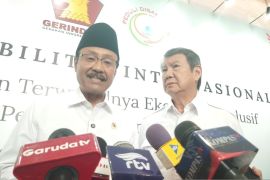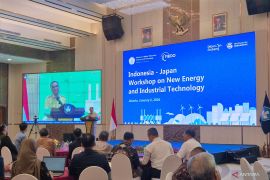suggested the use of sago rice analogue, or artificial rice made from sago, in the free nutritious lunch program for schoolchildren to support national food resilience.
"Using sago rice analogue will support our food resilience mission by making it a staple food in place of rice," Kartasasmita explained here on Monday.
The minister said that sago is an indigenous food that must be promoted to make it as popular as rice as a staple food.
Using the sago rice analogue will also be consistent with the priority agendas of President-elect Prabowo Subianto and Vice President-elect Gibran Rakabuming Raka on developing energy, water, and food resilience, he added.
"We should set up a firm foundation to realize food resilience. Sago, as a food commodity, has a huge potential for further development for food resilience in Indonesia," Kartasasmita said.
Related news: Use sago analog rice as rice substitute: Minister
The free lunch program is in its trial stage ahead of its implementation. On Friday (July 26, 2024), Gibran said that his administration will try out a range of schemes to determine the best approach for carrying out the program.
Meanwhile, Kartasasamita also suggested using sago as a bioethanol material to realize energy resilience in the country.
He pointed out that the ministry's Directorate General of Agro-Industry has collected relevant data on the potential use of sago as a renewable energy source.
According to the directorate general, up to 250 kilolitres of bioethanol can be produced from 2.5 hectares of sago plantation, he noted.
"Moreover, (using sago) has a strong local wisdom background since there is no more major sago powerhouse other than Indonesia," the minister said.
Related news: Bioethanol optimization can reduce oil, gas import quota: BRIN
Translator: Maria Cicilia G, Nabil Ihsan
Editor: Yuni Arisandy Sinaga
Copyright © ANTARA 2024












